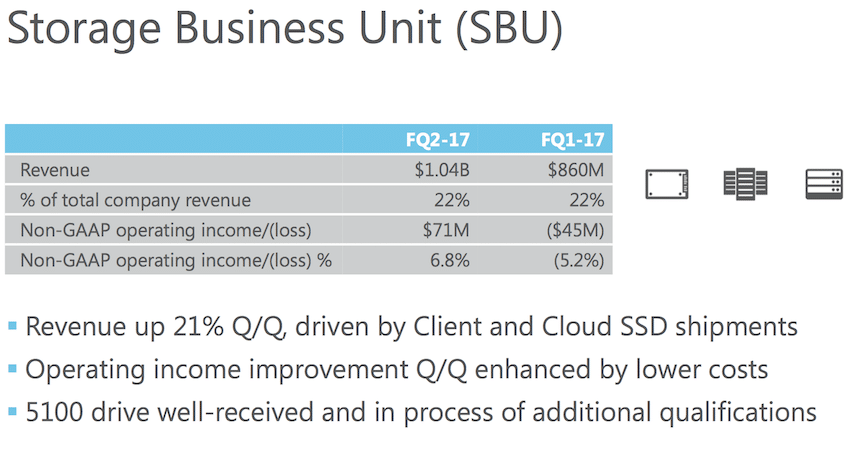
Micron reported their 2Q 2017 results last night and the quarter was a monster. Much of that is due to great traction in Micron's SSD business, thanks to 3D TLC NAND making Micron highly cost competitive. Micron also saw increases in their OEM, cloud and enterprise businesses, both in terms of capacity shipped and total sales. Micron is obviously benefitting from the shift away from HDDs as a capacity tier; perhaps in an outsized way as their strength right now is clearly in higher capacity SATA SSDs that are especially popular in software defined platforms like VMware vSAN.
3D NAND is the clear driver in Micron's success in the SSD business; 32-layer 3D NAND is being driven throughout their business. Looking ahead Micron expects to see "meaningful output" of 64-layer 3D NAND by August. Engineering of their CMOS circuitry will mean Micron can ship the industry's smallest die size.
Turning to 3D XPoint, Micron had very little to say other than they expect initial shipments this year. Micron makes XPoint in partnership with Intel, who has already announced and started shipping their first XPoint products dubbed Optane. Micron did demo some of their XPoint line, dubbed QuantX, last year where they showed QuantX outpacing NAND-based SSDs quite handily in both 2.5" U.2 and HHHL add in card form factors. While QuantX-based SSDs will clearly be niche early on, from a thought leadership perspective, it's important for Micron to prevent Intel from taking all of the early attention. Intel did well at their launch to get major partners like HPE and VMware to throw their weight behind Optane. More near term, Micron did indicate plans to offer new enterprise NVMe SSDs that leverage high-density NAND.
Sign up for the StorageReview newsletter

